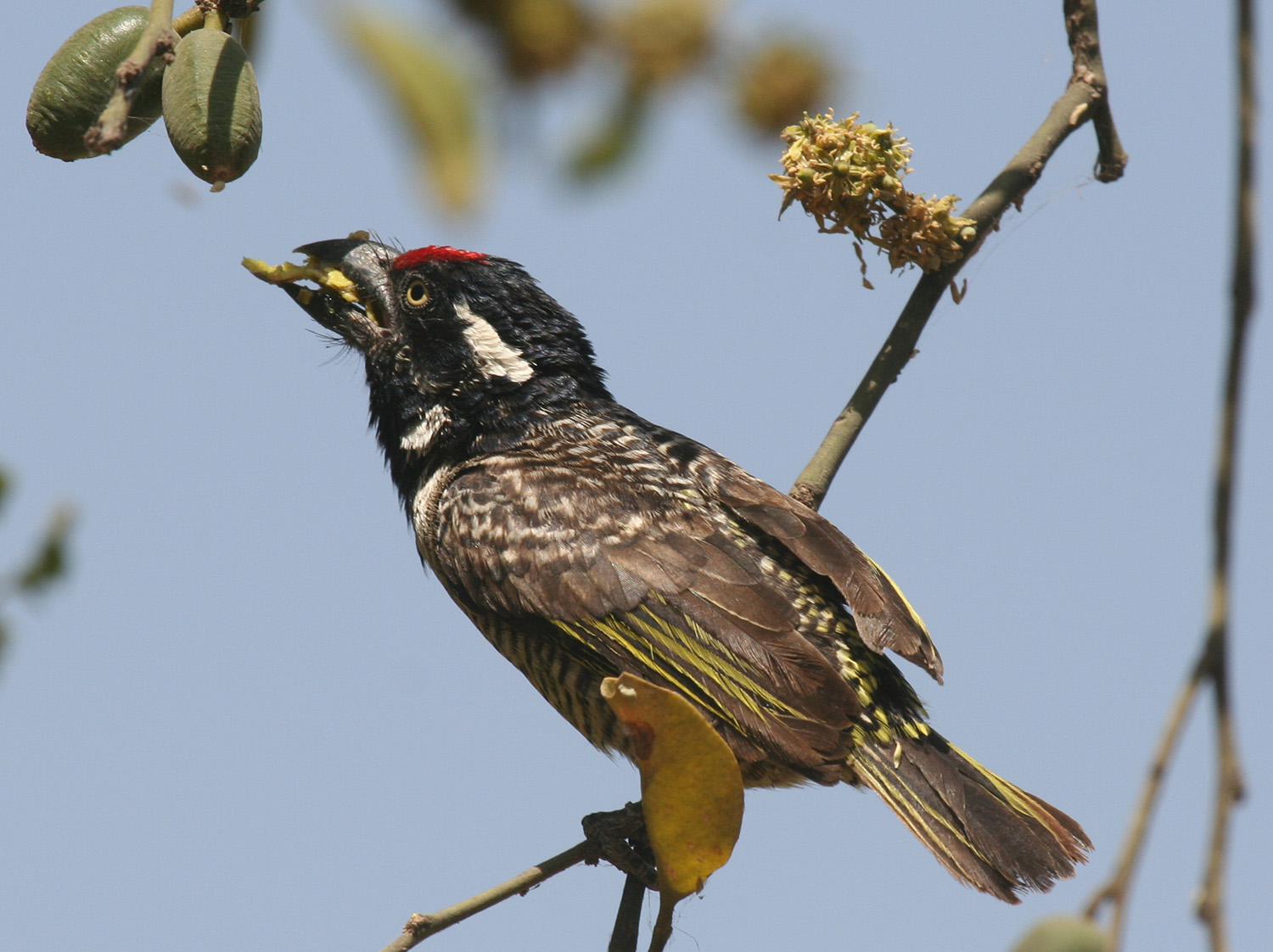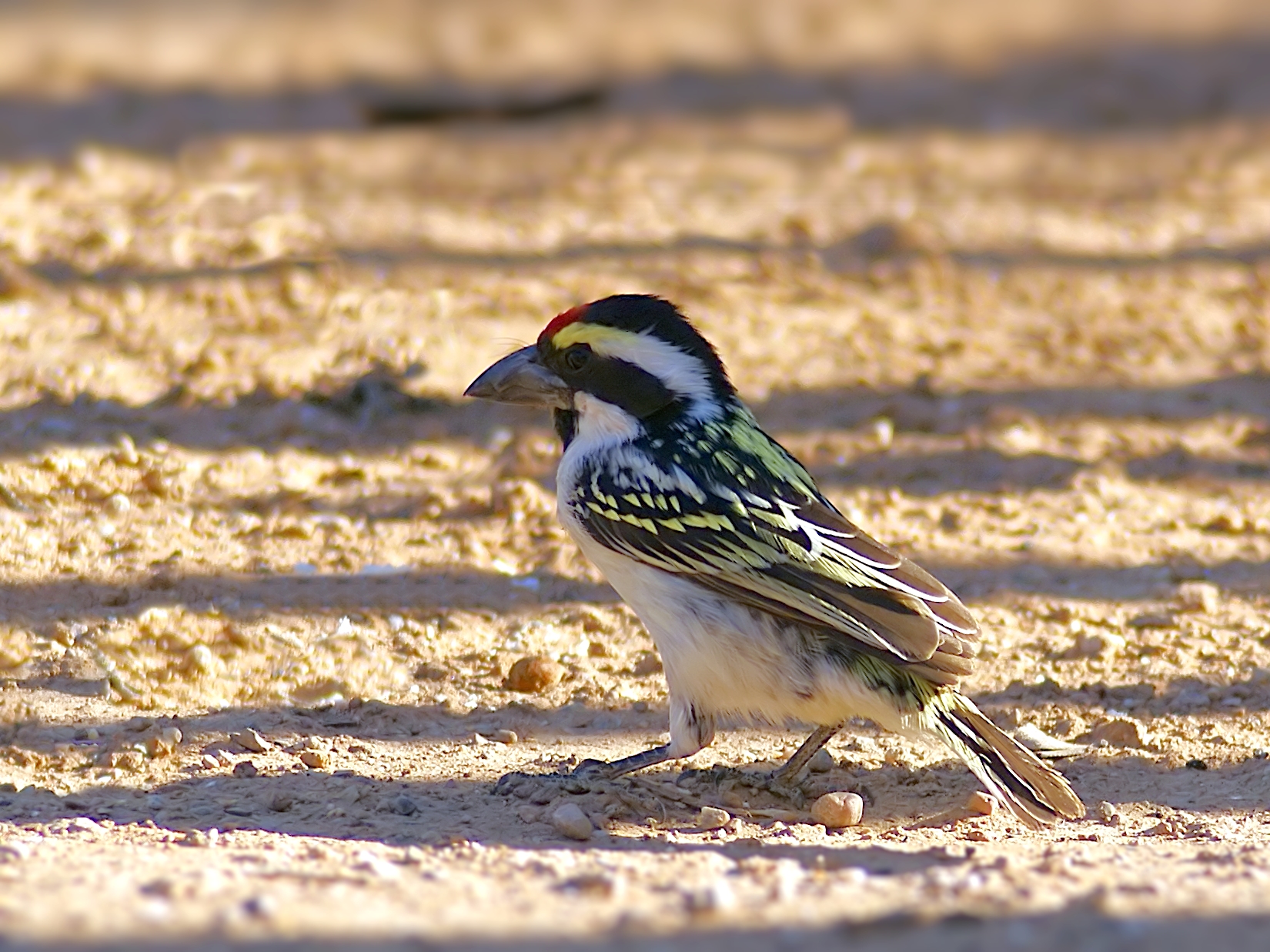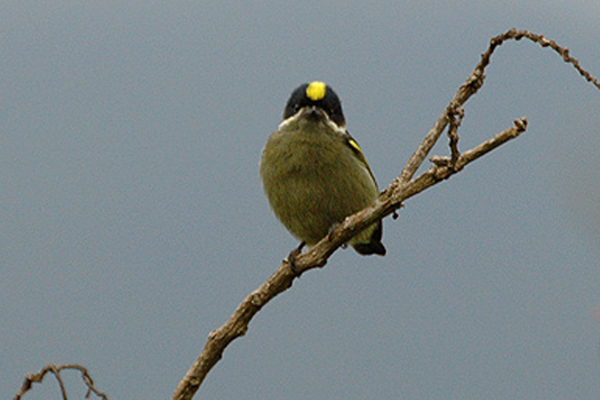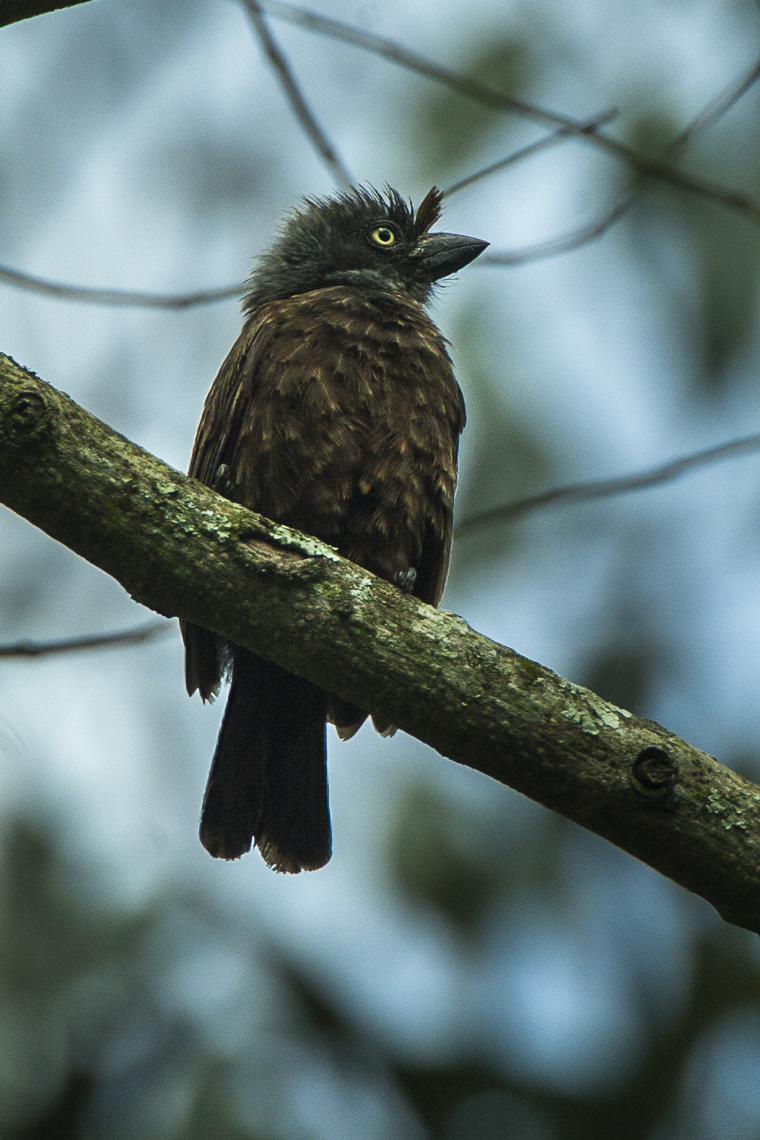|
Lybiidae
The African barbets are birds in the family Lybiidae. There are 43 species ranging from the type genus ''Lybius'' of forest interior to the tinkerbirds (''Pogoniulus'') of forest and scrubland. They are found throughout sub-Saharan Africa, with the exception of the far south-west of South Africa. The African terrestrial barbets, Trachyphoninae, range from the southern Sahara to South Africa. Members of one genus, ''Trachyphonus'', are the most open-country species of barbets. The subfamily Lybiinae contains the African arboreal barbets. There are 37 species of Lybiinae in 6 genera. Description and ecology Most African barbets are about long, plump-looking, with large heads, and their heavy bill is fringed with bristles; the tinkerbirds are smaller, ranging down to the red-rumped tinkerbird (''Pogoniulus atroflavus'') at and . They are mainly solitary birds, eating insects and fruit. Figs and numerous other species of fruiting tree and bush are visited. An individual barbet ... [...More Info...] [...Related Items...] OR: [Wikipedia] [Google] [Baidu] |
Lybius
''Lybius'' is a genus of African barbets from the family Lybiidae (formerly included in the Capitonidae and sometimes in the Ramphastidae). This genus ranges across sub-Saharan Africa. Description The ''Lybius'' species are usually about long, plump-looking, with large heads, and their heavy bill is fringed with bristles. Almost all species in this genus are characterized by their red feathers on the head or around the eyes, but there is a great variety of morphology in this genus. There are barbets like the white-headed barbet that have no red on the head at all, and species like the double-toothed barbet with all red feathers on the ventral side of the body and head, but with only black on the dorsal side. Pretty much all species in this genus have striking plumage, consisting of red, black, yellow or white colors. These are also mainly solitary birds that eat fruit, insects and small vertebrates like lizards. Taxonomy The genus ''Lybius'' belongs to the order Piciformes, ... [...More Info...] [...Related Items...] OR: [Wikipedia] [Google] [Baidu] |
Piciformes
Nine families of largely arboreal birds make up the order Piciformes , the best-known of them being the Picidae, which includes the woodpeckers and close relatives. The Piciformes contain about 71 living genera with a little over 450 species, of which the Picidae (woodpeckers and relatives) make up about half. In general, the Piciformes are insectivorous, although the barbets and toucans mostly eat fruit and the honeyguides are unique among birds in being able to digest beeswax (although insects make up the bulk of their diet). Nearly all Piciformes have parrot-like zygodactyl feet—two toes forward and two back, an arrangement that has obvious advantages for birds that spend much of their time on tree trunks. An exception are a few species of three-toed woodpeckers. The jacamars aside, Piciformes do not have down feathers at any age, only true feathers. They range in size from the rufous piculet at 8 centimetres in length, and weighing 7 grams, to the toco toucan, a ... [...More Info...] [...Related Items...] OR: [Wikipedia] [Google] [Baidu] |
Double-toothed Barbet
The double-toothed barbet (''Lybius bidentatus'') is a species of bird in the family Lybiidae. It is found in Angola, Benin, Burundi, Cameroon, Central African Republic, Republic of the Congo, Democratic Republic of the Congo, Ivory Coast, Equatorial Guinea, Ethiopia, Gabon, Ghana, Guinea, Guinea-Bissau, Kenya, Liberia, Mali, Nigeria, Rwanda, Sierra Leone, South Sudan, Tanzania, Togo, and Uganda. Within ''Lybius bidentatus'', there are two subspecies: ''Lybius bidentatus bidentatus'' and ''Lybius bidentatus aequatorialis''. Description and habitat ''Lybius bidentatus'' is a barbet with black and red coloring. Its bill is large and off-white, and the skin around its eyes is yellow. The double-toothed barbet is black on the top side of its body with a patch of white feathers on its back. Its breast is red, with a white patch on its side. Females and males have similar markings, except that females have lines of black feathers on the white side patch. Juveniles of the species a ... [...More Info...] [...Related Items...] OR: [Wikipedia] [Google] [Baidu] |
Tricholaema
''Tricholaema'' is a bird genus in the African barbet family Lybiidae. It was formerly included with the New World barbets in the family Capitonidae and sometimes also in the Ramphastidae. The genus ''Tricholaema'' was introduced by the French brothers Jules and Édouard Verreaux in 1855 with the hairy-breasted barbet (''Tricholaema hirsuta'') as the type species. The generic name combines the Ancient Greek Ancient Greek includes the forms of the Greek language used in ancient Greece and the ancient world from around 1500 BC to 300 BC. It is often roughly divided into the following periods: Mycenaean Greek (), Dark Ages (), the Archaic p ... ''thrix'' meaning ''hair'' and ''laimos'' meaning "throat". The genus contains the following six species: References Bird genera Barbets Taxonomy articles created by Polbot {{Piciformes-stub ... [...More Info...] [...Related Items...] OR: [Wikipedia] [Google] [Baidu] |
Red-rumped Tinkerbird
The red-rumped tinkerbird (''Pogoniulus atroflavus'') is a species of bird in the Lybiidae The African barbets are birds in the family Lybiidae. There are 43 species ranging from the type genus ''Lybius'' of forest interior to the tinkerbirds (''Pogoniulus'') of forest and scrubland. They are found throughout sub-Saharan Africa, with ... family (African barbets). It is widely spread across the African tropical rainforest. References red-rumped tinkerbird Birds of the African tropical rainforest red-rumped tinkerbird Taxonomy articles created by Polbot {{Piciformes-stub ... [...More Info...] [...Related Items...] OR: [Wikipedia] [Google] [Baidu] |
Tinkerbird
The tinkerbirds or tinker barbets are the genus ''Pogoniulus'' of the Lybiidae, the African barbet family of near passerines, which was formerly included in the Capitonidae and sometimes in the Ramphastidae. Tinkerbirds are widely distributed in tropical Africa. List of species in taxonomic order Supposed fossil remains of Late Miocene tinkerbirds were found at Kohfidisch (Austria Austria, , bar, Östareich officially the Republic of Austria, is a country in the southern part of Central Europe, lying in the Eastern Alps. It is a federation of nine states, one of which is the capital, Vienna, the most populous ...)Mlíkovský (2002) but are not yet thoroughly studied. It is not clear whether they belong to an extant genus, but given the late date this may well be so. Footnotes References * Mlíkovský, Jirí (2002): ''Cenozoic Birds of the World, Part 1: Europe''. Ninox Press, Prague. [...More Info...] [...Related Items...] OR: [Wikipedia] [Google] [Baidu] |
Yellow-breasted Barbet
The yellow-breasted barbet (''Trachyphonus margaritatus'') is a species of bird in the Lybiidae family. It is found in Burkina Faso, Chad, Djibouti, Eritrea, Ethiopia, Mali, Mauritania, Niger, Nigeria, Somalia Somalia, , Osmanya script: 𐒈𐒝𐒑𐒛𐒐𐒘𐒕𐒖; ar, الصومال, aṣ-Ṣūmāl officially the Federal Republic of SomaliaThe ''Federal Republic of Somalia'' is the country's name per Article 1 of thProvisional Constituti ..., and Sudan. References yellow-breasted barbet Birds of the Sahel yellow-breasted barbet Taxonomy articles created by Polbot yellow-breasted barbet {{Piciformes-stub ... [...More Info...] [...Related Items...] OR: [Wikipedia] [Google] [Baidu] |
Trachyphonus
The African terrestrial barbets are the bird genus ''Trachyphonus'' in the African barbet family (Lybiidae), which was formerly included in the Capitonidae and sometimes in the Ramphastidae. These birds are more terrestrial than the other African barbets and differ in some other respects too; they are thus separated in a monotypic subfamily Trachyphoninae. Species in taxonomic sequence The genus contains 6 extant species: * Yellow-billed barbet, ''Trachyphonus purpuratus'' * Crested barbet, ''Trachyphonus vaillantii'' * Yellow-breasted barbet, ''Trachyphonus margaritatus'' * Red-and-yellow barbet, ''Trachyphonus erythrocephalus'' * D'Arnaud's barbet, ''Trachyphonus darnaudii'' * Usambiro barbet, ''Trachyphonus usambiro'' Extinct taxa The Early to Middle Miocene genus '' Capitonides'' from Europe, as well as "CMC 152", a distal carpometacarpus from the Middle Miocene locality of Grive-Saint-Alban (France), have been placed in this genus,Mlíkovský, Jirí (2002): ''Cenozoic ... [...More Info...] [...Related Items...] OR: [Wikipedia] [Google] [Baidu] |
Stactolaema
''Stactolaema'' is a bird genus in the African barbet family ( Lybiidae) which was formerly included in the Capitonidae New World barbets are near passerine birds from the family Capitonidae of the order Piciformes, which inhabit humid forests in Central and South America. They are closely related to the toucans. The New World barbets are plump birds, with short ... and sometimes in the Ramphastidae. It contains the following species: External links * Bird genera Barbets Taxonomy articles created by Polbot {{Piciformes-stub ... [...More Info...] [...Related Items...] OR: [Wikipedia] [Google] [Baidu] |
Buccanodon
''Buccanodon'' is a bird genus in the African barbet family (Lybiidae) which was formerly included in the Capitonidae and sometimes in the Ramphastidae. It contains two species, both referred to as the yellow-spotted barbets. This genus was formerly considered a monotypic taxon just containing ''B. duchaillui'', but a study published in 2019 found populations west of the Dahomey Gap In West Africa, the Dahomey Gap refers to the portion of the Guinean forest-savanna mosaic that extends all the way to the coast in Benin, Togo, and Ghana, thus separating the forest zone that covers much of the south of the region into two separa ... to constitute a new, distinct species, ''B. dowsetti''. Both species are nearly identical and can only be reliably distinguished in the field by their songs and their distribution. Species References {{Taxonbar, from=Q5734788 Bird genera Barbets Taxa named by George Robert Gray ... [...More Info...] [...Related Items...] OR: [Wikipedia] [Google] [Baidu] |
Gymnobucco
''Gymnobucco'' is a bird genus in the African barbet family (Lybiidae), which was formerly included in the Capitonidae and sometimes in the Ramphastidae Toucans (, ) are members of the Neotropical near passerine bird family Ramphastidae. The Ramphastidae are most closely related to the American barbets. They are brightly marked and have large, often colorful bills. The family includes five g ... (toucans). It contains the following species: Bird genera Barbets Taxa named by Charles Lucien Bonaparte Taxonomy articles created by Polbot {{Piciformes-stub ... [...More Info...] [...Related Items...] OR: [Wikipedia] [Google] [Baidu] |
Arthropod
Arthropods (, (gen. ποδός)) are invertebrate animals with an exoskeleton, a segmented body, and paired jointed appendages. Arthropods form the phylum Arthropoda. They are distinguished by their jointed limbs and cuticle made of chitin, often mineralised with calcium carbonate. The arthropod body plan consists of segments, each with a pair of appendages. Arthropods are bilaterally symmetrical and their body possesses an external skeleton. In order to keep growing, they must go through stages of moulting, a process by which they shed their exoskeleton to reveal a new one. Some species have wings. They are an extremely diverse group, with up to 10 million species. The haemocoel, an arthropod's internal cavity, through which its haemolymph – analogue of blood – circulates, accommodates its interior organs; it has an open circulatory system. Like their exteriors, the internal organs of arthropods are generally built of repeated segments. Their nervous system is ... [...More Info...] [...Related Items...] OR: [Wikipedia] [Google] [Baidu] |









